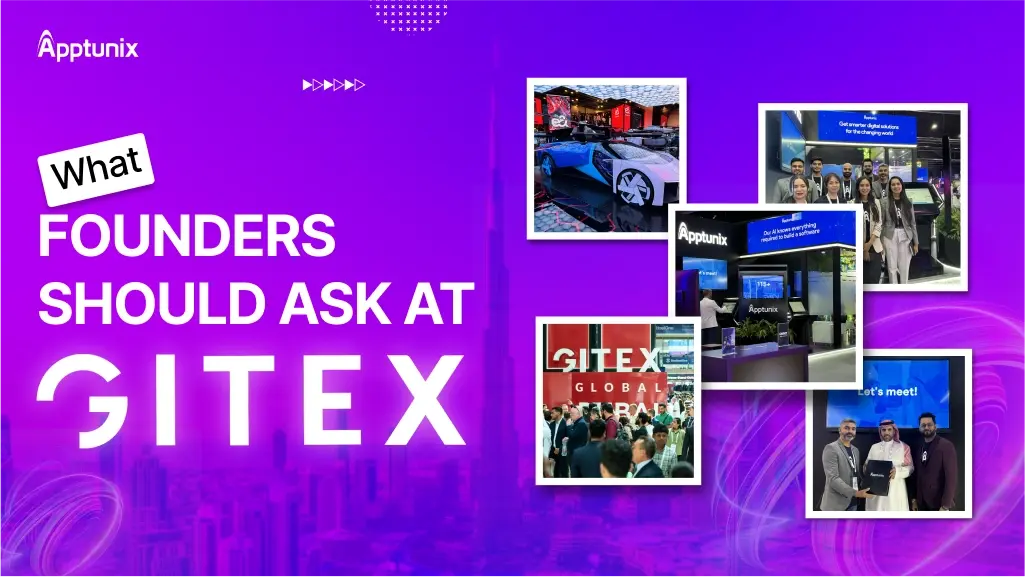
What Founders Should Ask at GITEX 2025?
33 Views 6 min October 8, 2025

Nikhil Bansal is the Founder and CEO of Apptunix, a leading Software Development Company helping startups as well as brands in streamlining their business processes with intuitive and powerful mobile apps. After working in the iOS app development industry for more than 10 years, he is now well-equipped with excellent problem-solving and decision-making techniques.

In the software development industry, time is money.
If you belong here, you must know how frightening it is to not deliver on time or not being able to release the required feature when needed.
Sometimes, it is horrible! And most of the time, it costs businesses millions of dollars in sales.
The solution to this problem is Agile Software Development Methodology.
It is one such framework that has helped many businesses avoid delays and save cost by pivoting easily and moving quickly when needed.
Oftentimes, developers build products as per the business requirement specifications document, but it turns out something the client never wanted. Agile helps you eliminate these situations by finding flaws early instead of knowing about these problems months after the project started. You might be shocked to know, but projects that use Agile are 28% more successful than those that follow traditional methods of software development.
93% of business units that had fully embraced the agile methodology before the pandemic outperformed units that had not – McKinsey & Company.
Isn’t it amazing? Of course, it is. So, if you are planning for software development with the help of an in-house or remote team of software engineers, Agile is for you. In this article, we will list three Agile Software Development Success Stories to help you understand how it helped businesses develop profitable apps and improve business processes.
But, let’s first get the basics right.
The Agile SDLC is an iterative and incremental approach to developing quality products fast. It follows the same process as the traditional waterfall model but allows moving teams to and from across different stages.
It is based on 4 values and 12 principles of the Agile Manifesto. Every business or software development team that uses these principles and values dedicatedly, follows Agile Software Development Methodology. It adds flexibility and speed to the process by streamlining communication and collaboration between different teams working on a project.
A Minimum Viable Product (MVP) is the core of Agile. It refers to a product that just has the core features enough to do the main function of the product. For example, if you have an idea to develop a Taxi-Booking App Like Uber in your own country, instead of developing an entire app having features like split fares, push notifications, and so on, you just develop an initial product that lets users register, book a ride, and make payment.
That will be the MVP version of your app which you can launch in your city or target location to check how users respond to it. It will let you test your idea while spending less money.
Here is a quick representation of how Agile Software Development Methodology is different from the Traditional or Waterfall Software Development Approach:

Whereas the Waterfall model follows a rigid process where no backward tracking or movement is possible, Agile is a flexible approach to develop quality digital solutions. The main goal of Agile is to ensure faster time to market, product-market fit, and top-notch quality.
For businesses who don’t have a clear idea of the product in mind and think there is a scope of improvement in their product idea, Agile methodology is a blessing. It lets them test developed products at any time in between the process and allows them to request changes.
But, there are some Pros as well Cons of this process:
Acceptance of changed requirements is the biggest advantage of Agile methodology. It lets budding entrepreneurs validate their ideas by dividing the entire project into sprints and pivoting whenever necessary.

Now that we know about Agile Methodology and its Pros and Cons, let’s analyze some success stories that will make your belief stronger.
1. CURE: We Deliver Health by ApptunixCURE is one of the recently launched apps by our team for one of our clients in Germany. It is a healthcare product delivery app having amazing UI/UX design and features. We used Agile Methodology to develop this app and the entire project was delivered within two months – as requested by the client.

The story started when a client came to Apptunix in mid-November 2021 and he was looking for a team who can help launch his product faster and without compromising with quality.
Without any delay, we segregated the business and functional requirements in one document, which later on served as the basics of our mobile app development process. We worked in the structure of a five days sprint set and by breaking down project requirements into manageable and small processes, we were able to develop the core functionality in just one month.
CURE is a mobile application developed using native technologies and NodeJS was used for backend development. The team we assigned for the delivery of CURE consisted of:
Since the project was having shifting requirements and fell in the category of short-span projects, we used an adaptive process for its development. At the end of each sprint, we represented the end product to the client and proceeded after accommodating the feedback.
The client was extremely happy on the day of the app launch and we are now working on the second phase of app development as per the feedback collected from end-users by launching the MVP. The project was completed on budget and on time – one of the perfect Agile software development success stories.
2. Uber – One of the Biggest Ride-Hailing ApplicationsUber – one of the biggest taxi booking apps is also a success story of Agile Methodology. The app is mainly written in JavaScript and the same technology is used to calculate supply and get an idea of demand. Java and Objective C are native languages used to develop Android and iOS apps for Uber respectively.
When the app was launched in 2010 in San Francisco, USA, as UberCab, it just had core features. In fact, in the early days, it was just a web-based transportation app developed using PHP. The cab booking used to happen via Email and there was not even an option to pay.
However, after a little while, Travis found that it is difficult to manage requests by email. Then, he called a few drivers and discussed with them the Uber Business Model. Some drivers showed interest and got registered immediately. It was his first success and the rest is history.
They developed an MVP, launched it in the market, tested the idea, and got success fast. Starting with an MVP helped Uber finetune their business model as well as app features. They tested the product idea within a small set of early adopters and planned a smooth launch thereafter. Today, Uber is one of the biggest taxi-booking apps in the world.
3. British TelecomThe company embraced the Agile model when a new CIO was recruited who decided to change the Waterfall model of the company due to several challenges associated with it, including:
To solve all the problems, the team at British Telecom decided to switch to Agile and the results were overwhelming. They decided to adopt continuous development and integration and ditched documentation for user stories.
After switching to frequent iterations, they were able to reduce their delivery time from 12 months to 90 days and with better quality. Read the full story of Agile transformation at British Telecom here, it is also one of the best Agile software development success stories.
Agile is not just a mobile app development methodology. It is a way of working. At Apptunix, we have Agile embedded in our culture and we strongly follow Scrum or Kanban for mobile app projects under development in Apptunix.
We understand that mobile app development is not easy and accommodating the feedback of all stakeholders is crucial for the success of a project. Thus, we work sprint by sprint with real-time planning and efficient risk management. Here is what’s most important for us at Apptunix:

There is nothing more important than keeping processes transparent in a mobile app development process. At Apptunix, we ensure this transparency by building a continuous connection with the client. We update all the stakeholders after every sprint to eliminate every chance of building something that is not desired.
Each project has a team of dedicated designers, developers, and testers. Plus, we assign a product owner and scrum master to every team who takes care of the delivery, plans meetings, reports, and keeps everyone on the same page to make processes seamless.
To control and invest the productivity of team members on the right tasks, we have strict time control methods. Instead of repeating the same mistakes again, we try to find where the time is lagging. It helps us keep costs down for our clients and also maintains quality.
Here, we go a little above Agile. The methodology says instead of reports, teams should focus on user stories. However, we at Apptunix, believe that documentation lies at the heart of every project so we share timely reports with all our clients and team members. It helps us execute everything as planned.
Agile methodology helps us build mobile applications that are loved by users and clients. If you too are planning to test an idea the Agile way, or want more insights about our software development process, get in touch with one of our experts. Let’s help you become another and one of the best Agile software development success stories.

Get the weekly updates on the newest brand stories, business models and technology right in your inbox.
Book your free consultation with us.
Book your free consultation with us.





